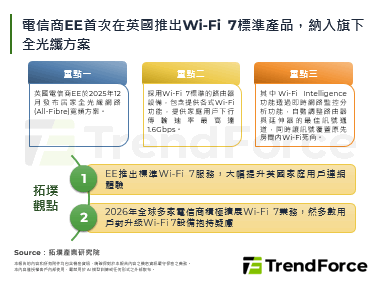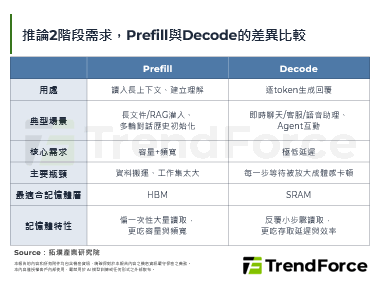11n, WiMAX and IPTV the Three Musketeers of Networking Sector in 2010
With an increasing number of people subscribing to broadband service, telecoms worldwide have scrambled to provide value-added services of all stripes in an integrated manner, which has not only boosted demand for deployment of wider bandwidths, but also put broadband network upgrade onto the map, making it the talk of the town for global networking industry in 2010. Estimates by Topology Research Institute project 2010 global communications equipment market value at US$467 bn, up 8.9% YoY, mainly deriving momentum from China, India, and other emerging markets where demand for Internet infrastructure remains strong, which should cause Ethernet LAN Switch consumption to grow. Meanwhile, with China Netcom and China Telecom releasing tender bids, shipments of cusomter-premises equipment (CPE), such as WiFi ADSL Router, etc., should continue to fare well, in the process benefiting Taiwanese equipment suppliers.
2010 global and Taiwan communications equipment production value projections

For 2010, Taiwan’s communications equipment market should be worth US$25.828bn, up 9.8% YoY. Kelly Hsieh, an analyst with Topology Research Institute, further analyzes that in 2010, global networking industry will benefit from continued establishment of WLAN 11n as a mainstream protocol that began in 2009, explosive growth of WiMAX demand from BRII countries (Brazil, Russia, India, Indonesia), and growth in STB shipment weighting inspired by IPTV service. In short, 802.11n, WiMAX, and IPTV will be the three musketeers to shore up networking sectoral growth for 2010.
Networking sector will grow steadily on existing services
Topology Research Institute points out that with WLAN 802.11n price falling to render the difference between 802.11n and 802.11g prices ever smaller, 802.11n products will now expand its application to consumer electronics, making it the main driver behind WLAN sectoral growth in 2010. As manufacturers keep up the good work of coming up with new process technologies and SoC solutions, we expect that 802.11n sales as part of the overall WLAN product shipments will rise to 54.4%.
With WiMAX network commercialized in more corners of the world, its terminal application products will come in a greater variety. Kelly Hsieh points out that 2010 is a pivotal year for WiMAX development, when WiMAX clientele worldwide should grow to 7.58mn subscribers, up 26.1% YoY, with growth steam streaming from emerging markets where commercial networks are set to expand, led by Asia-Pacific (up 29% YoY) and Latin America (up 27% YoY). As Taiwanese companies lack the ability to develop telco-grade Base Station, ASN Gateway (Access Service Network Gateway), and other networking equipment, having to rely on such International giants as Motorola and Nortel for technology. This explains why Taiwanese players might have the ability to develop WiMAX integrated chips and manufacture central-office equipment (COE) on their own, but they still ship mainly customer-premises equipment (CPE). In 2010, Taiwan’s WiMAX CPE shipments will grow 78% YoY but account for only 46% of global shipments, mainly competing with ZTE and Huawei from across the Taiwan Straits.
IPTV, as another highlight of the global networking market, emerged earliest in Europe, where subscribers have continued to grow in France, Spain, and Italy. IPTV operators are coming up with more audio/video added-value services to jack up average revenue per user (ARPU). In Asia, where supportive policies have caused broadband service prevalence to grow ever faster, telcos have rushed to offer audio/video, IPTV, and other contents to fulfill the bandwidth voids. Kelly Hsieh predicts that in 2010, global IPTV subscribers will grow 44.97% YoY to 432mn, which should translate into global IP STB terminal equipment production value of US$1.34bn. In China, up on wrap-up of telco restructuring, there will emerge three telcos that could provide the services the whole of China. In 2010, Chinese IPTV market will come in at only 5.54mn subscribers to account for less than 13% of the global clientele. But from there, we expect the market to grow over 40% YoY to indicate great potential.
On innovative applications, Femtocell, Smart Grid will shine
Overall for global networking sector in 2010, existing services will help sustain stable growth, while innovative applications will continue to nurture rising stars. Kelly Hsieh points out that led by such megatrend as wireless networking integrates internet and services, Femtocell market will take off in 2H10. Femtocell is cable of not only lowering backhaul burdens but also strengthening household signal coverage for greater user satisfaction, answering to the call of broadband subscribers suffering from poor mobile network coverage and poor transmission quality. Femtocell market should grow bigger in stature to attract more telcos in North America and Global to delve into. In 2010, global fixed mobile convergence (FMC) and Femtocell equipment production value should come in at US$842.1mn.
Despite the rosy outlook, Femtocell market still have to overcome such challenges as how to integrate difference network structures, how to sort out interferences existing among different Femtocell networks and between Femtocell and Macrocell networks, as well as how to achieve cost-down. Thorniest among these issues is pricing. Luckily, US telcos have launched full-fledged Femtocell services in 2009, seducing subscribers with subsidies. And once mass production sets in for Femtocell equipment, the installation will head south to set off lucrative business. Universal standard has been established for Femtocell in early 2009, which came as a big relief for companies involved. We think Femtocell production value to leap forward in the next few years.
Smart Grid is another up-and-coming area of brilliance for networking sector, as in Europe, US, and Japan, governments have set the goals of installing smart electric meters in the near term, develop advanced metering infrastructure (AMI) as the second step, and ultimately use Smart Grid to serve the policy purposes of energy conservation and carbon reduction. AMI system can not only act as an electric meter but performs such novelty functions as power management, transaction services, communications, data processing, and home-based smart appliance coordination, all pointing to new business opportunities.
Kelly Hsieh indicates that there are over 10mn electric meters in Taiwan, replacement of all which will translate into market value of over NT$20bn. In China, meanwhile, market potential amounts to US$1.05 per annum. In 2010, global Smart Grid market should feature a production value of over US$20bn. Smart Grid should open up new windows of opportunities for Taiwanese networking plants as the related value chain blossoms into something grander.






